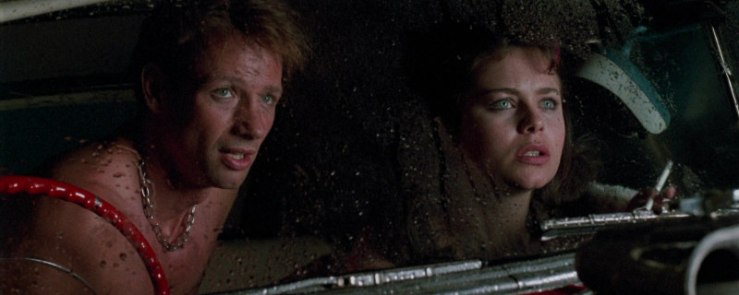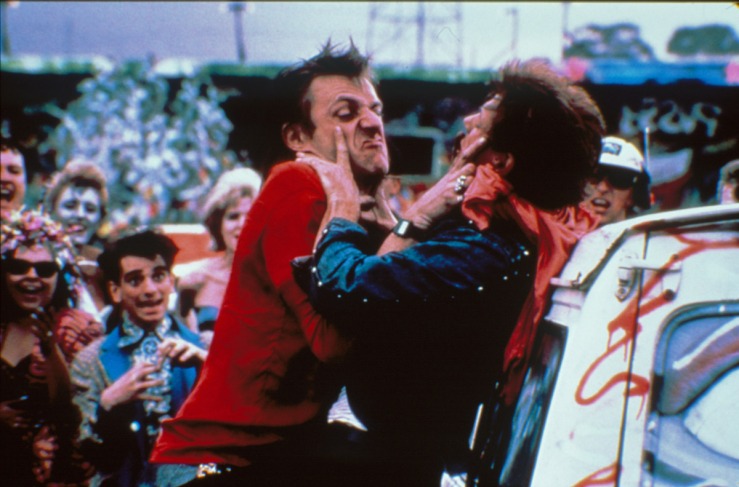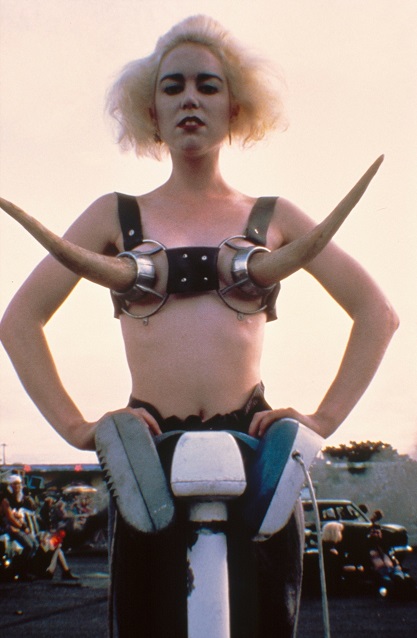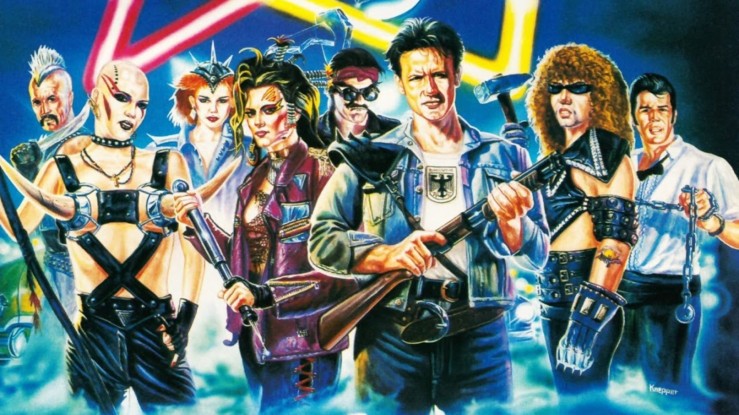In the near future of 1995 Australia is scrambling after an economic collapse. Roaming gangs steal car parts to sell in the black market. Old Drive-in theaters are turned into concentration camps unbeknownst to the public. Our main characters Crabs (Ned Manning) and his girlfriend Carmen (Natalie McCurry) go to a movie at the Star Drive-In and get stuck in the violence between the punk rock prisoners, immigrants, and the police.

Dead End Drive-In (1986)makes many promises and keeps only one. But this movie is still worth watching. While starting off as a Mad Max (1979) rip-off it quickly turns into something else.
It changes after the wheels are stolen off of Crabs’s car. Carmen is unfazed, but Crabs goes to the front desk to find the gates locked and the fences electrified. When Carmen finds there is no way out she accepts the drive-in as her new home and immediately adapts to living there. Crabs doesn’t. He feels trapped.
He tries to escape several times, but fails. During one of his attempts he learns that the Police are the one’s who are stealing car parts to make a little money on the side and make sure no one can piece a whole car together.
They are also the one’s busing in immigrants each morning. The Australians that have been at the Drive-In a while are very upset about this and yell racial slurs and start trouble.

This is the most interesting part of Dead End Drive-In (1986). It’s both a glimpse into and a critique of the sociopolitical and economic climate of Australia in 1986. So, a little history is needed.
Australia began the 1980s in a recession with inflation rising at a worrying rate. The government’s solution was to deregulate the banks, but this did little to quell it and the recession lasted into the 1990s. This wasn’t helped by one of Australia’s worst droughts in 1982 and worst brush-fire the following year.
There were also several high profile bombings in the early half of the decade, One that destroyed Judge Richard Gee’s home in 1984 and another at Police Headquarters in Melbourne in early 1986.
Lastly, immigrants from Vietnam, Cambodia, China, and other eastern countries were continuing to seek refuge in Australia because of three decades of skirmishes between the U.S. and the U.S.S.R.
So, their overall energy in the mid ’80s was one of fear and mistrust.

The Film touches on many of the fears Australians had at the time.
The economy in the movie world is a grim conclusion (though exaggerated) of what the mismanagement by the government in the 1980s could lead to in the ’90s.
The drive-in is a microcosm of Australia. The actual fences that trap people in the film represent the feelings of claustrophobia and hopelessness that consume countries in times of economic hardship and rising crime.
The fact that the police keep peace with their weapons rather than through community building only adds to these feelings.
Tension builds not only because of claustrophobia, but also an us-verses-them mentality that Crabs and Carmen see when they first arrive. Carmen quickly assimilates, saying to Crabs it’s easier this was, “the drive-in is all we got now.” She is then allowed into the inner circle of “true Australians” who hold white supremacy meetings in the old concession stand. And all the while Crabs is still trying to escape.
The “true Australians” don’t like the immigrants. And like many real world countries when there is an influx of people escaping turmoil happening concurrently with an economic crisis and rising crime, it’s easy to find a scapegoat.
And how does this movie tie this all together?
It doesn’t.
At the last moment Crabs steals a police van and floors it toward a perfectly placed tow-truck with it’s bed lowered at a convenient angle. He drives the truck up the ramp and through the Star Drive-In sign. He lands perfectly. An upbeat ’80s synth-pop song (Playing with Fire) plays and the credits role.

But why is the movie still good?
It serves a more fundamental purpose, more important than world building or plot. In context of the time it was made, it keeps the one promise it needs to. It feeds an emotional need. Few can escape the fear and confinement of uncertain times, but Crabs did. He got free. And in that moment we do too.

